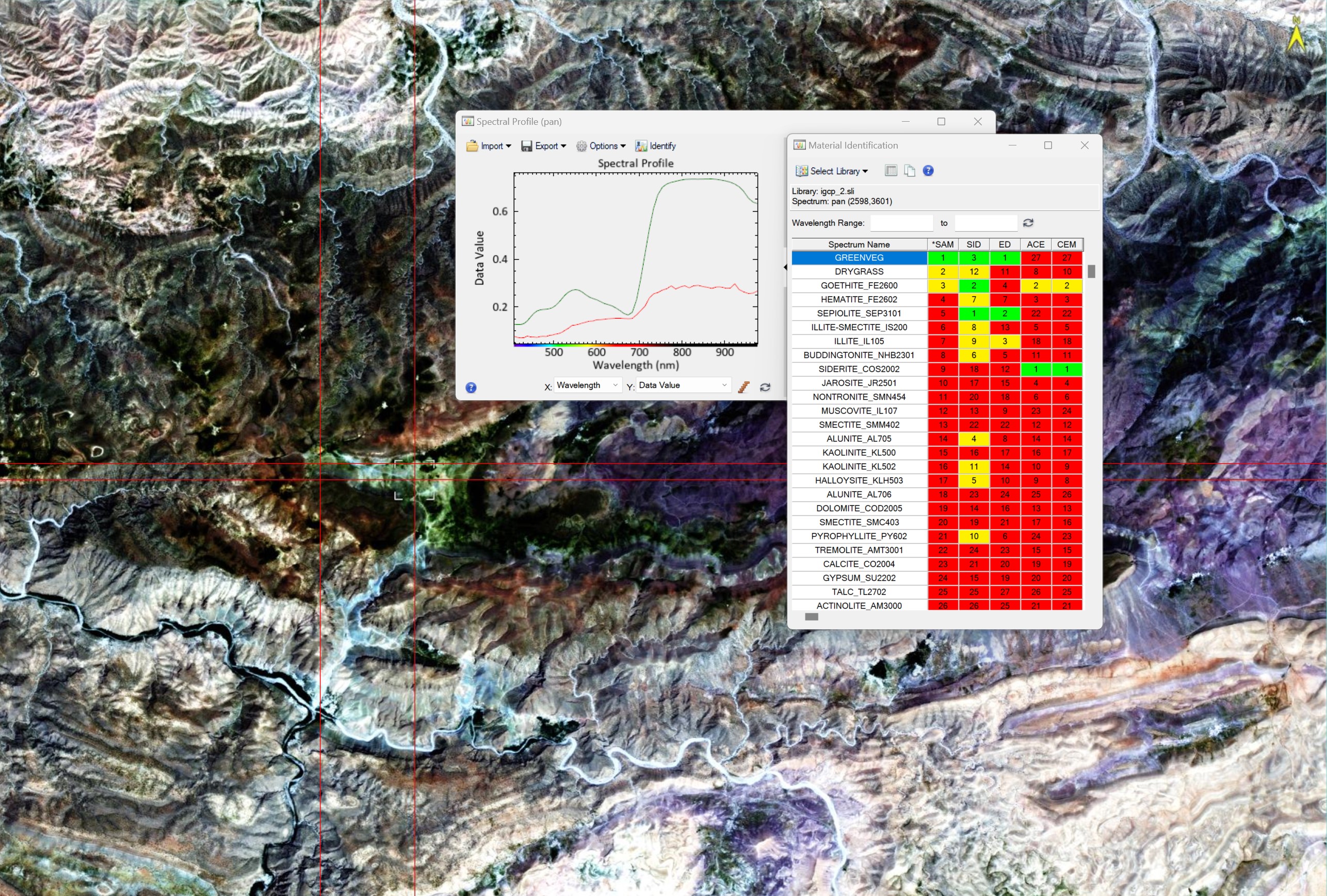
Hyperspectral Target Detection: Advanced Methods for Remote Sensing
Or: How to Find Specific Materials When Everything Looks the Same
Introduction: What is Target Detection?
Hyperspectral target detection identifies specific materials of interest by comparing pixel spectra to known spectral signatures. Unlike identifying all materials in a scene, target detection focuses on locating known spectral targets within unknown backgrounds.
Key applications: - Mineral exploration and geological mapping - Precision agriculture and crop monitoring - Environmental contamination detection - Military surveillance applications - Urban material classification
The Target Detection Workflow
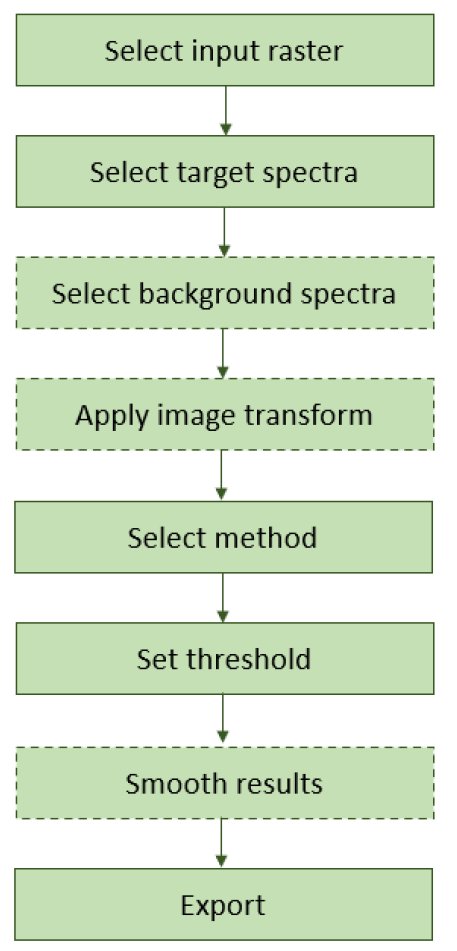
Sequential process:
- Input Selection - Choose hyperspectral image
- Target Spectra - Define materials of interest
- Background Spectra - Characterize non-targets (optional)
- Image Transform - Apply MNF if needed
- Method Selection - Choose detection algorithm
- Threshold Setting - Separate targets from background
- Smoothing - Remove spurious detections (optional)
- Export Results - Generate final products
Preprocessing: Getting Data Ready
Spectral Library Preparation
Reference spectra from spectral libraries (USGS, ECOSTRESS, JPL) must match image characteristics.
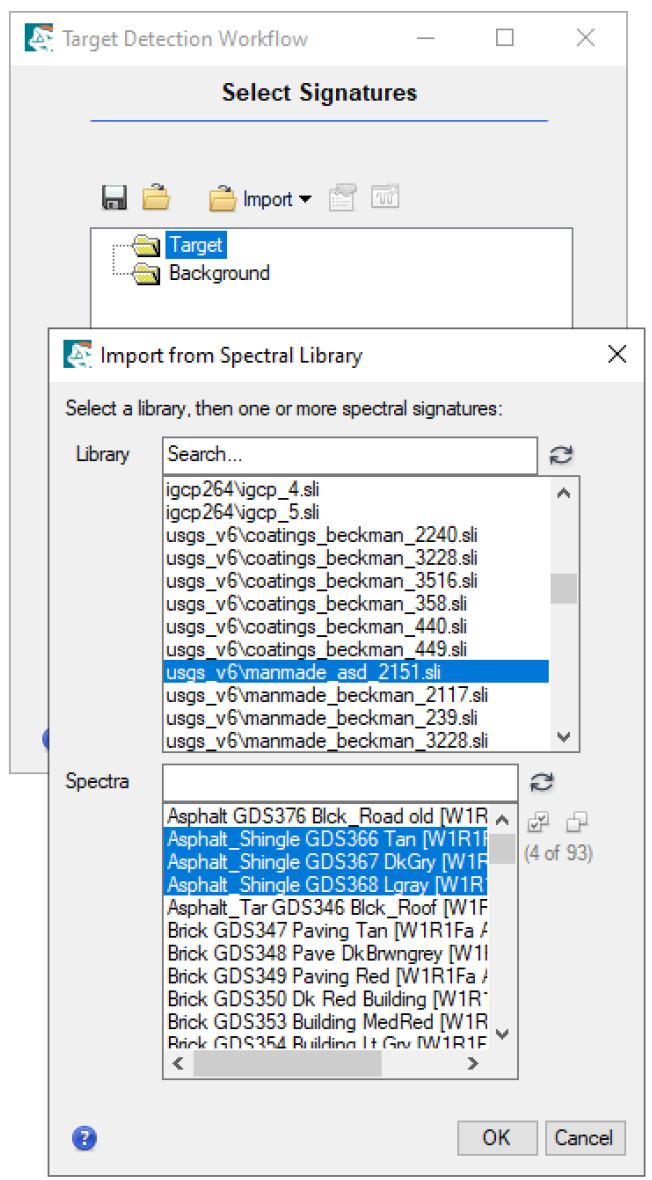
Requirements: - Matching spectral resolution and wavelength range - Proper radiometric calibration (radiance vs reflectance) - Atmospheric correction applied - Spectral resampling to sensor bandpasses
Background Characterization
Define background spectra using ROI selection to improve detection accuracy.
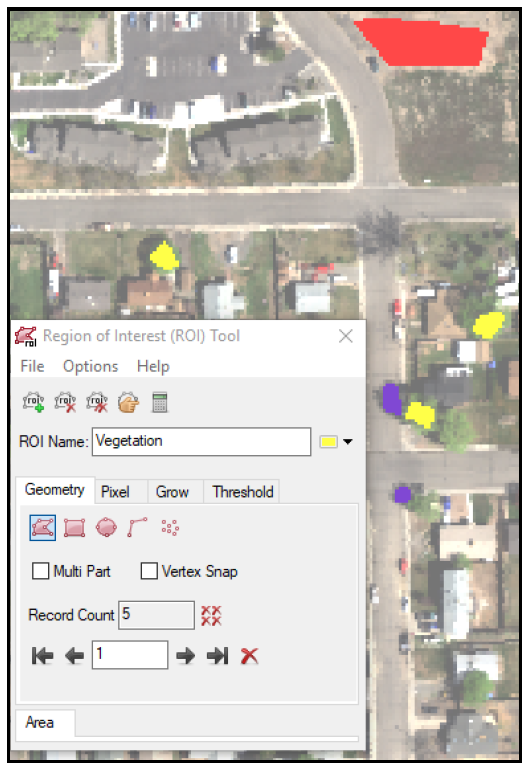
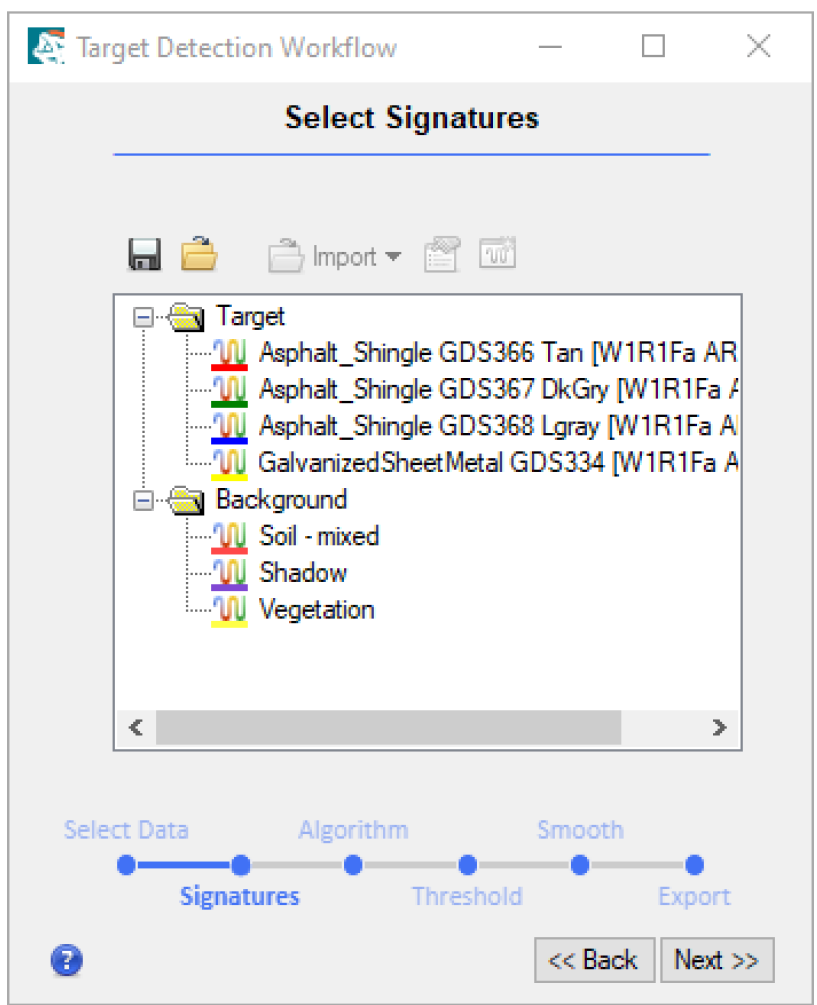
MNF Transform for Dimensionality Reduction
Minimum Noise Fraction transformation separates signal from noise, reducing computational complexity while enhancing signal-to-noise ratio.
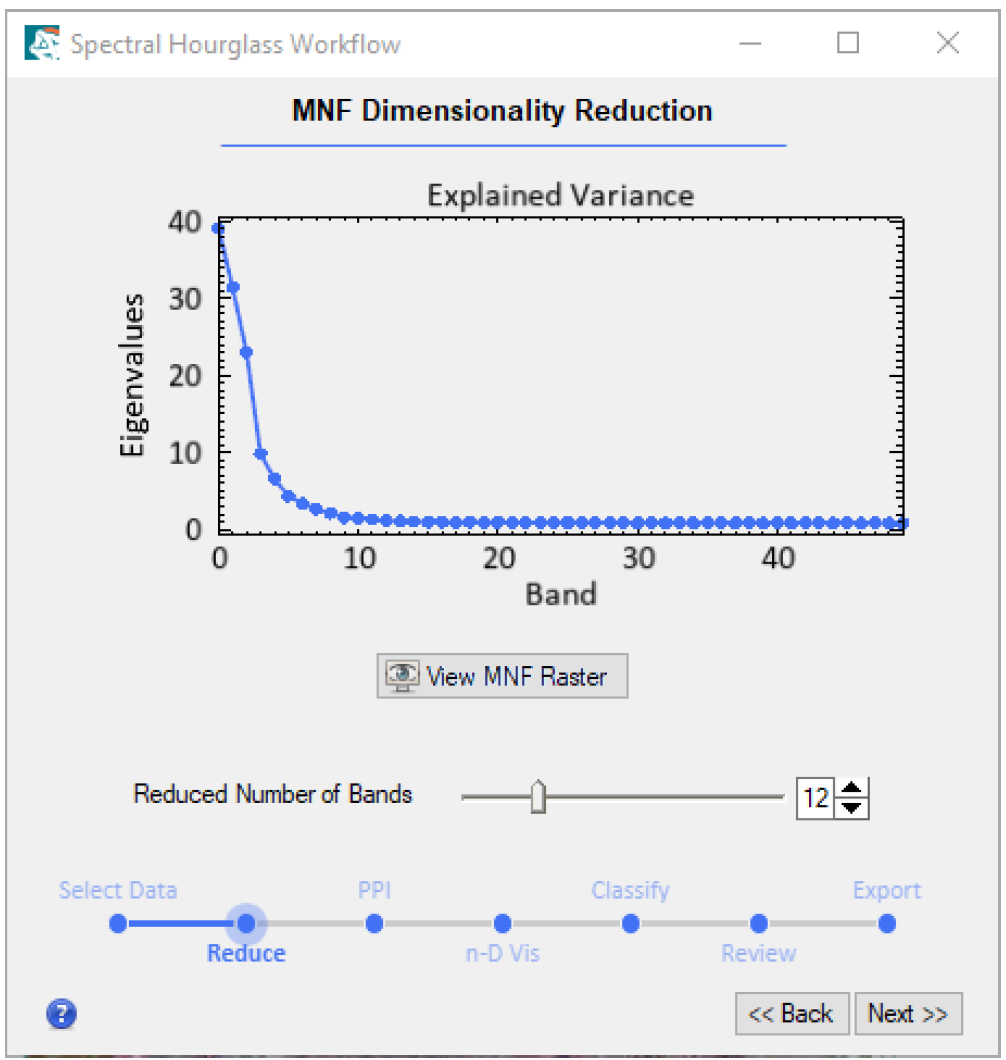
Benefits: - Reduces computational complexity - Enhances signal-to-noise ratio - Required for MTMF and MTTCIMF methods - Identifies inherent dimensionality
When to use: Required for MTMF/MTTCIMF. Optional for other methods (full dimensionality often produces better results).
ENVI Target Detection Methods
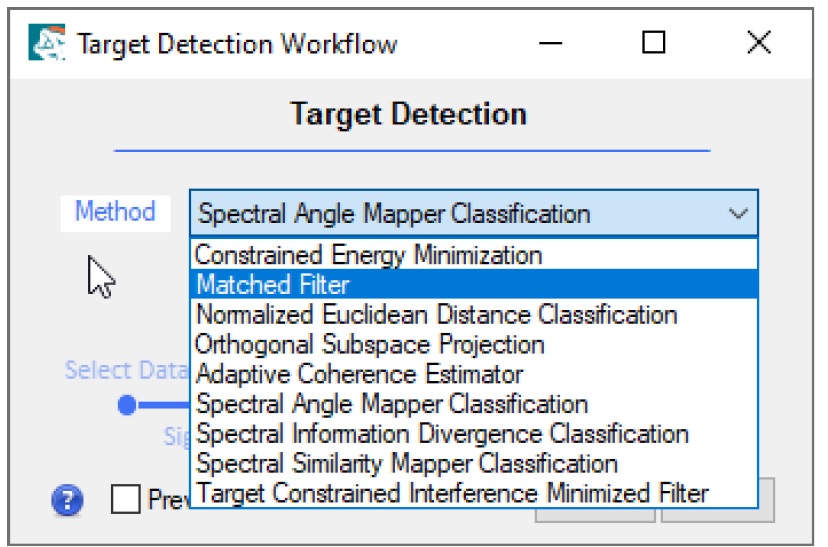
Adaptive Coherence Estimator (ACE)
Determines target presence probability without requiring background knowledge.
Strengths: - Background-independent detection - Robust to illumination variations - Excellent sub-pixel detection - No endmember knowledge required
Best for: Variable backgrounds, unknown scene composition
Spectral Angle Mapper (SAM)
Measures spectral similarity using n-dimensional angles.
Strengths: - Illumination insensitive - Fast computational performance - Works with apparent reflectance - Produces classification maps
Best for: Whole-pixel classification, material mapping
Constrained Energy Minimization (CEM)
Minimizes interference from background materials.
Strengths: - Covariance-based background modeling - Superior noise suppression - Sensitive to target signature quality
Best for: Known targets in complex backgrounds
Matched Filtering (MF)
Detects materials using correlation matching.
Strengths: - Simple implementation - Fast processing speed
Weaknesses: - Subject to false positives from rare materials - Limited spectral unmixing capability
Best for: Initial target screening, rapid assessment
Mixture-Tuned Matched Filtering (MTMF)
Combines matched filtering with spectral unmixing.
Strengths: - Sub-pixel abundance estimation - Infeasibility metric reduces false positives - Superior rare target discrimination
Requirements: - MNF-transformed data - Target spectra
Best for: Sub-pixel targets, material abundance mapping
Method Comparison Table
| Method | Complexity | Speed | Background Knowledge | Sub-pixel |
|---|---|---|---|---|
| ACE | Medium | Fast | Not required | Yes |
| SAM | Low | Very Fast | Not required | No |
| CEM | Medium | Fast | Not required | Limited |
| MF | Low | Very Fast | Not required | Limited |
| MTMF | High | Medium | Not required | Yes |
| OSP | High | Medium | Required | Limited |
| TCIMF | High | Medium | Required | Limited |
Threshold Selection and Refinement
Interactive threshold optimization separates true targets from background pixels.
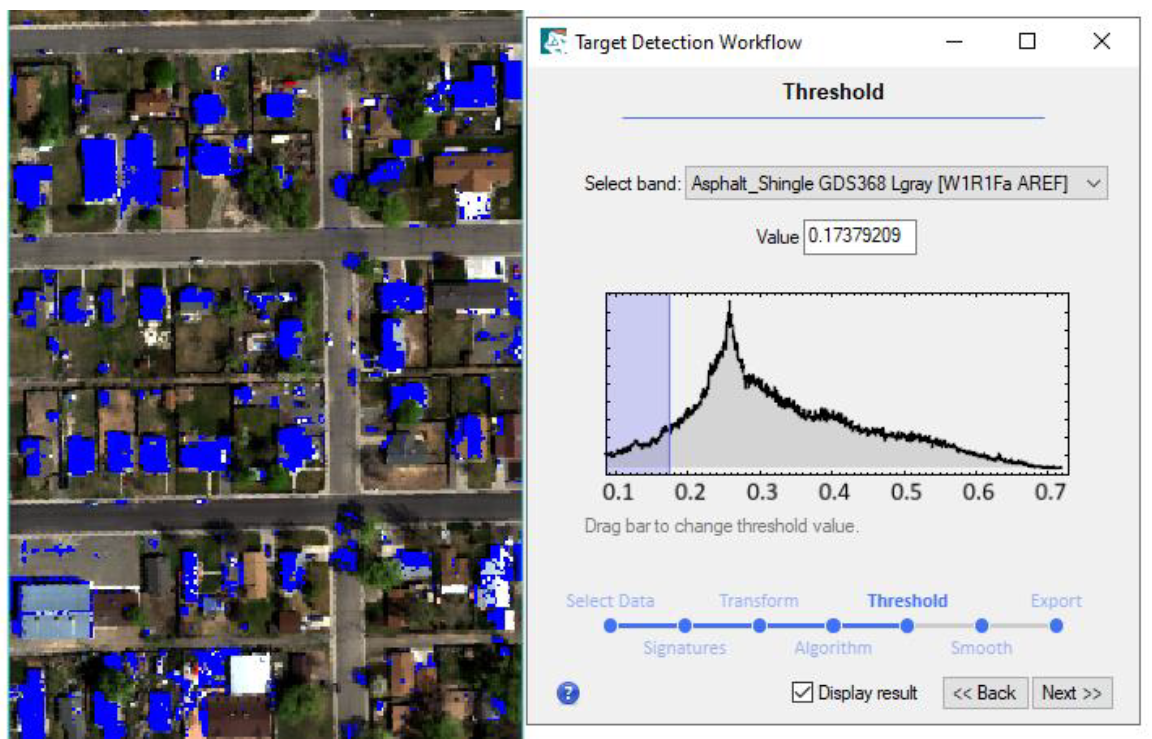
Best practices: - Analyze histogram distributions - Consider false positive vs false negative tradeoffs - Validate with ground truth data - Document selection criteria
Spatial Smoothing
Morphological filtering removes spurious detections while preserving target boundaries.
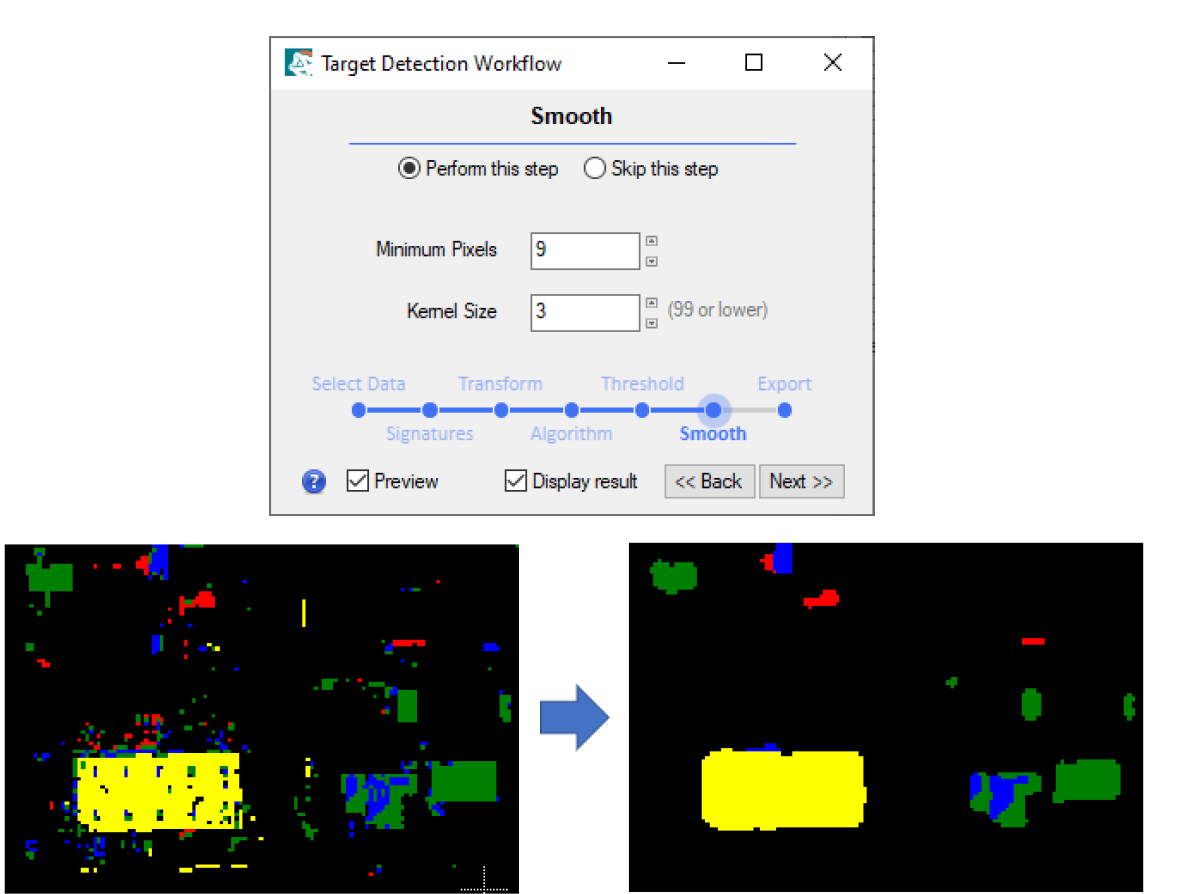
Operations: - Kernel size selection - Majority filtering - Clump and sieve operations
Results Visualization and Export

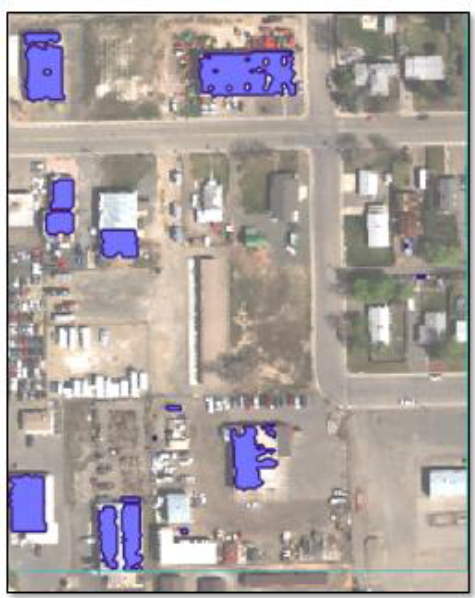
Output formats: - Shapefiles for ArcGIS and QGIS - GeoJSON for web mapping - KML for Google Earth - Classification rasters (GeoTIFF) - Abundance images for quantitative analysis
Best Practices and Common Pitfalls
Quality Control Checklist
- Verify sensor calibration and metadata
- Remove bad bands (water vapor, detector failures)
- Apply appropriate atmospheric correction
- Validate reference spectra quality
- Test multiple detection methods
- Document threshold selection criteria
- Perform accuracy assessment
- Archive processing parameters
Common Challenges and Solutions
Challenge: False positives from rare materials
Solution: Use MTMF instead of MF
Challenge: Poor detection in shadowed areas
Solution: Apply topographic correction, use ACE method
Challenge: Spectral similarity between materials
Solution: Focus on diagnostic absorption features
Challenge: Mixed pixel confusion
Solution: Apply spectral unmixing, use MTMF/MTTCIMF
Conclusion
Successful hyperspectral target detection requires systematic data preprocessing, appropriate algorithm selection, and rigorous validation. ENVI software provides comprehensive tools for operational workflows from atmospheric correction through GIS export.
The choice of detection method depends on target characteristics, background complexity, and accuracy requirements. Combining multiple methods and thorough validation ensures reliable material identification across diverse remote sensing applications.
Contact
Email: mapcrafty@gmail.com
Subject: “Hyperspectral Target Detection Consultation”